
航天科技前沿(英文)(Advances in Astronautics Science and Technology)(国际刊号) 知网目次
- 主管单位:
中国科学技术协会
- 主办单位:
中国宇航学会
- 国际刊号:
2524-5252;EISSN2524-5260
- 国内刊号:
- 学科分类:
- 字数:
-
- 有无基金:
- 周期:
国际号刊-季刊
- 特殊属性:
外文期刊
- 电话:
- 邮箱:
csajournal@163.com(官网邮箱)
- 复合因子:
0
- 综合因子:
0
- 收录:
知网目次
- 级别:
期刊简介
《航天科技前沿》期刊已被查看: 次
更新频次
单位占比
一作占比
投稿指南
1、该刊只有国际刊号。
2、投稿方式:在线投稿。
3、官网网址:https://www.springer.com/journal/42423
4、投稿系统:
https://www2.cloud.editorialmanager.com/aast
5、主办单位网址:
http://www.csaspace.org.cn/n2489287/n2505490/c2521924/content.html
(中国宇航学会官网)
6、官网邮箱:csajournal@163.com
7、出刊日期:季刊,一年出版4期。
2024年3月30日星期六
《航天科技前沿(英文)》简介
AAST创刊于2018年,为中国宇航学会创办的综合性、国际化宇航领域学术期刊,重点聚焦航天基础学科领域、新兴学科领域及交叉学科领域的突破性进展。国际宇航联合会为期刊联合主办单位,Sringer Nature为期刊出版单位。AAST目前已发行5卷12期,包括“空间太阳能电站”“结构与材料”等专刊专栏。
期刊编委会由来自16个国家的47名航天科学家组成。其中,中国两院院士6位,国际宇航科学院院士36位。主编为中国工程院院士、飞行器结构力学和复合材料专家杜善义。
2022年起,期刊由半年刊转为季刊,包括飞行器设计与力学、材料、结构与制造,环境试验与器件,测试与发射,制导、导航与控制,动力与推进,深空探测,载人飞行、空间科学、空间法律、法规与政策等栏目。公开发行刊号ISSN2524-5252(纸质)/ISSN2524-5260(电子)。
《航天科技前沿(英文)》投稿指南
(Advances in Astronautics Science and Technology)
【官网信息】
Advances in Astronautics Science and Technology
Submission guidelines
Instructions for Authors
Manuscript Submission
Submission of a manuscript implies: that the work described has not been published before; that it is not under consideration for publication anywhere else; that its publication has been approved by all co-authors, if any, as well as by the responsible authorities – tacitly or explicitly – at the institute where the work has been carried out. The publisher will not be held legally responsible should there be any claims for compensation.
Permissions
Authors wishing to include figures, tables, or text passages that have already been published elsewhere are required to obtain permission from the copyright owner(s) for both the print and online format and to include evidence that such permission has been granted when submitting their papers. Any material received without such evidence will be assumed to originate from the authors.
Online Submission
Please follow the hyperlink “Submit manuscript” on the right and upload all of your manuscript files following the instructions given on the screen.
Please ensure you provide all relevant editable source files. Failing to submit these source files might cause unnecessary delays in the review and production process.
Editorial procedure
Single-blind peer review
This journal follows a single-blind reviewing procedure.
Title Page
Please make sure your title page contains the following information.
Title
The title should be concise and informative.
Author information
The name(s) of the author(s)
The affiliation(s) of the author(s), i.e. institution, (department), city, (state), country
A clear indication and an active e-mail address of the corresponding author
If available, the 16-digit ORCID of the author(s)
If address information is provided with the affiliation(s) it will also be published.
For authors that are (temporarily) unaffiliated we will only capture their city and country of residence, not their e-mail address unless specifically requested.
Abstract
Please provide an abstract of 150 to 250 words. The abstract should not contain any undefined abbreviations or unspecified references.
For life science journals only (when applicable)
Trial registration number and date of registration
Trial registration number, date of registration followed by “retrospectively registered”
Keywords
Please provide 4 to 6 keywords which can be used for indexing purposes.
Declarations
All manuscripts must contain the following sections under the heading 'Declarations'.
If any of the sections are not relevant to your manuscript, please include the heading and write 'Not applicable' for that section.
To be used for all articles, including articles with biological applications
Funding (information that explains whether and by whom the research was supported)
Conflicts of interest/Competing interests (include appropriate disclosures)
Availability of data and material (data transparency)
Code availability (software application or custom code)
Authors' contributions (optional: please review the submission guidelines from the journal whether statements are mandatory)
Additional declarations for articles in life science journals that report the results of studies involving humans and/or animals
Ethics approval (include appropriate approvals or waivers)
Consent to participate (include appropriate statements)
Consent for publication (include appropriate statements)
Please see the relevant sections in the submission guidelines for further information as well as various examples of wording. Please revise/customize the sample statements according to your own needs.
Text
Text Formatting
Manuscripts should be submitted in Word.
Use a normal, plain font (e.g., 10-point Times Roman) for text.
Use italics for emphasis.
Use the automatic page numbering function to number the pages.
Do not use field functions.
Use tab stops or other commands for indents, not the space bar.
Use the table function, not spreadsheets, to make tables.
Use the equation editor or MathType for equations.
Save your file in docx format (Word 2007 or higher) or doc format (older Word versions).
Manuscripts with mathematical content can also be submitted in LaTeX. We recommend using Springer Nature’s LaTeX template.
Headings
Please use the decimal system of headings with no more than three levels.
Abbreviations
Abbreviations should be defined at first mention and used consistently thereafter.
Footnotes
Footnotes can be used to give additional information, which may include the citation of a reference included in the reference list. They should not consist solely of a reference citation, and they should never include the bibliographic details of a reference. They should also not contain any figures or tables.
Footnotes to the text are numbered consecutively; those to tables should be indicated by superscript lower-case letters (or asterisks for significance values and other statistical data). Footnotes to the title or the authors of the article are not given reference symbols.
Always use footnotes instead of endnotes.
Acknowledgments
Acknowledgments of people, grants, funds, etc. should be placed in a separate section on the title page. The names of funding organizations should be written in full.
……
更多详情:
https://www.springer.com/journal/42423/submission-guidelines
上一篇:法律话语国际期刊(英文)(International Journal of Legal Discourse)(国际刊号)下一篇:飞行器强度研究(内刊)
《航天科技前沿》同类航天工程期刊
-
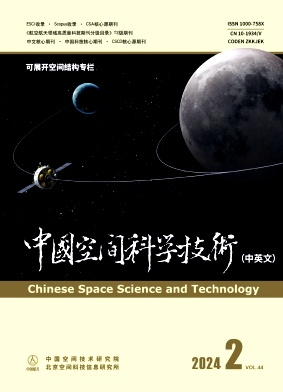
中国空间科学技术(中英文)(不收版面费审稿费)
北核,CSCD,科核,武A,高T2
CN中文-双月刊影响因子1.42
-

空间科学学报
北核,CSCD,科核,高T1,高T2,高T3
CN中文-双月刊影响因子0.526
-
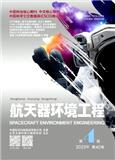
航天器环境工程(不收版面费审稿费)
CSCD,科核,武B+
CN中文-双月刊影响因子0.882
-
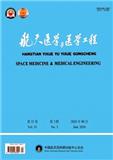
航天医学与医学工程
科核,武A-
CN中文-双月刊影响因子0
-
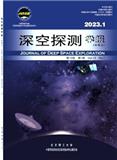
深空探测学报(中英文)
北核,CSCD,科核,武B+
CN中文-双月刊影响因子1.201
-
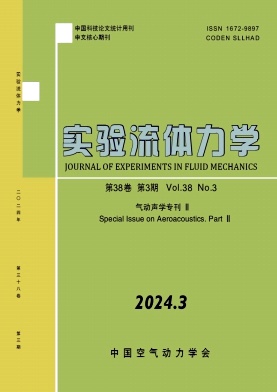
实验流体力学(原:气动实验与测量控制 流体力学实验与测量)
北核,CSCD,科核,高T3,武B+
CN中文-双月刊影响因子0.886
-
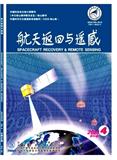
航天返回与遥感(不收版面费审稿费)
北核,CSCD,科核,武A-
CN中文-双月刊影响因子1.304
-
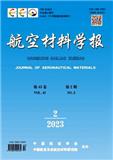
航空材料学报
北核,CSCD,科核,武A+,高T2
CN中文-双月刊影响因子2.529
常见问题
-
航天科技前沿杂志社官网、联系方式是什么?
航天科技前沿杂志社官网:https://www.springer.com/journal/42423
投稿网址:https://www2.cloud.editorialmanager.com/aast
投稿邮箱:csajournal@163.com(官网邮箱) -
航天科技前沿杂志是核心期刊么?
航天科技前沿不是核心期刊,级别是:, 是:航天工程分类下的知网目次收录的期刊。
-
请问你们是航天科技前沿杂志社吗?
我们不是《航天科技前沿》杂志社。本站主要从事期刊信息展示与期刊推荐,不是任何杂志官网,直投稿件请联系杂志社。本站仅提供免费的学术指导、论文辅导、期刊投稿信息整理收集服务。
-
你们指导服务后可以保证文章被发表吗?
期刊发表的成功与否,主要取决于文章内容的质量。编辑老师会根据研究领域、创新性等多因素进行考量。我们会帮助您理解期刊的发表要求,助力提升发表几率,从而增加发表的机会。
-
晋级论文能否在报纸上发表?
在学术界,论文的发表往往被视为研究者职业发展的重要一环。晋级论文,即为了获得更高职称或学术地位而撰写的学术论文,通常需在专业期刊上发表。然而,许多人可能会问
